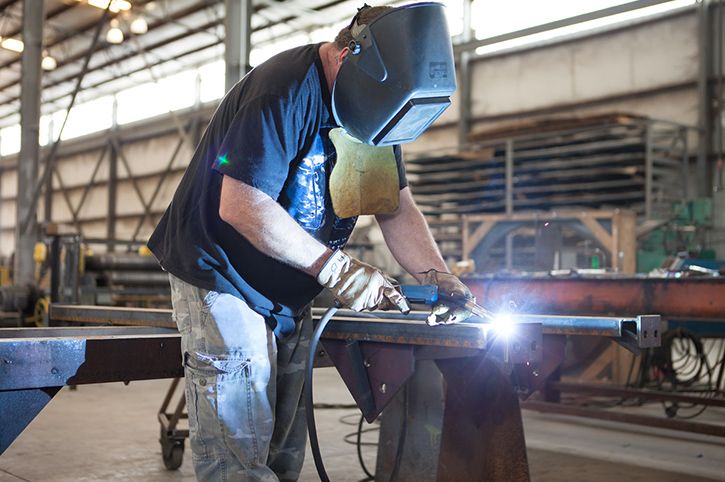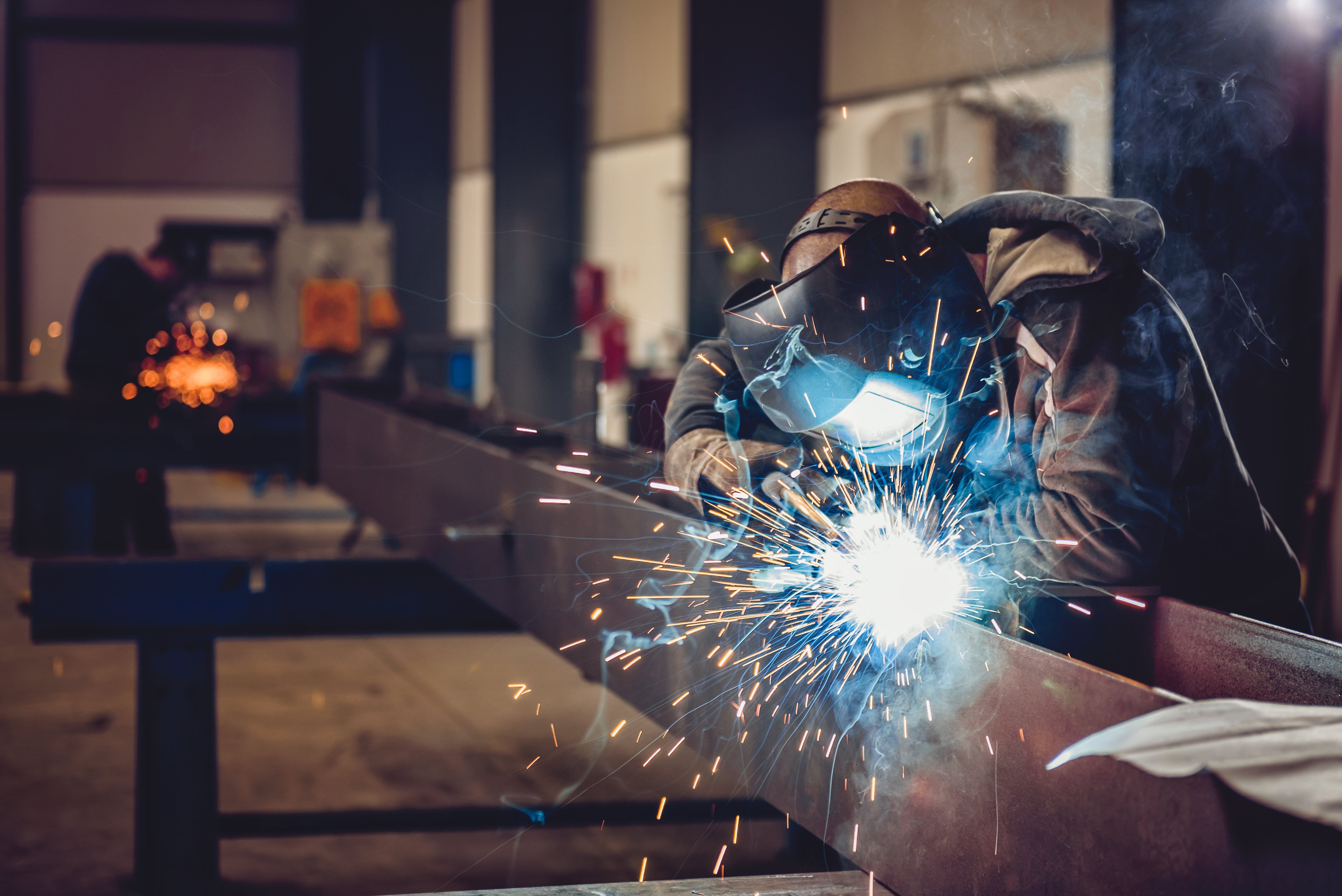Usual Welding Repair Issues and Exactly How to Address Them Effectively
Welding repair work commonly come across a variety of problems that can jeopardize the honesty of the final item. Common troubles consist of inadequate infiltration, porosity, and misalignment, among others. Each flaw provides one-of-a-kind difficulties that call for specific methods for resolution. Comprehending these problems is necessary for welders intending to improve their skills and outcomes. This conversation will check out these usual welding repair work concerns and efficient methods to address them.
Poor Penetration
Inadequate infiltration happens when the weld steel falls short to totally fuse with the base material, resulting in weak joints and prospective structural failings. This problem frequently comes from insufficient warmth input, wrong electrode angle, or improper welding speed. Welders might run into insufficient penetration due to a mistake of the required specifications for a specific material density or kind. In addition, contamination on the base product's surface area can hinder efficient bonding, worsening the issue. To deal with poor penetration, welders should guarantee ideal settings on their equipment and preserve a clean work surface. Regular assessment of welds is suggested to determine any shortages early, permitting timely improvements and the avoidance of compromised structural stability in bonded settings up.
Porosity
Porosity is a common issue in welded joints that manifests as little gas bubbles entraped within the weld steel. This problem can jeopardize the integrity of the weld, causing reduced toughness and potential failing under stress. Montana Mobile Welding and Repair Belgrade Welding. Porosity normally emerges from contamination, dampness, or inappropriate welding methods, which allow gases to escape into the molten weld swimming pool. To resolve porosity, welders need to ensure correct surface area preparation, maintain a clean working environment, and use appropriate welding parameters. Additionally, picking the appropriate filler material and protecting gas can minimize gas entrapment. Routine inspection and screening of welds can aid identify porosity early, assuring timely restorative actions are taken, consequently maintaining the top quality and dependability of the welded structure
Misalignment
Imbalance in welding can develop from various aspects, including improper setup and thermal growth. Recognizing the source is important for effective resolution. Numerous improvement strategies are offered to realign components and ensure structural stability.
Reasons of Misalignment
Welding misalignment frequently stems from a variety of underlying problems that can jeopardize structural integrity. One main reason is inappropriate fit-up of elements before welding, which can result in spaces and irregular surfaces. Variations in thermal development during the welding process can also cause distortion, specifically if the products being joined have different coefficients of development. Additionally, insufficient fixturing and clamping might fall short to hold elements securely in location, bring about movement throughout welding. Inadequately kept equipment, consisting of welding equipments and tools, may introduce incongruities in the weld bead, more adding to misalignment. Finally, driver mistake, stemming from not enough training or experience, can likewise play a substantial role in developing misaligned welds.
Improvement Strategies Readily Available
Dealing with imbalance properly requires a combination of restorative techniques tailored to the certain issues at hand. One usual technique is using jigs or fixtures to hold components in the right position throughout welding, guaranteeing consistent positioning. In addition, pre-heating the materials can help in reducing distortion and boost fit-up. For considerable imbalance, mechanical realignment strategies, such as using hydraulic jacks or clamps, can be employed to fix the position prior to welding. Post-weld heat therapy may also be necessary to relieve anxieties triggered by misalignment. Lastly, careful assessment and modification during the configuration phase can prevent misalignment concerns from becoming considerable troubles, promoting a smoother welding process and boosting general architectural honesty.
Distortion
Distortion is a typical challenge in welding that can arise from different aspects, consisting of uneven home heating and cooling. Recognizing the reasons for distortion is crucial for executing efficient avoidance techniques. Addressing this issue not only enhances architectural integrity however likewise boosts the overall quality of the weld.
Sources of Distortion
When subjected to the intense heat of welding, products typically undertake changes that can result in distortion. This phenomenon mainly emerges from thermal development and contraction during the welding procedure. As the weld area warms up, the material increases; upon cooling, it acquires, which can create inner stresses. Furthermore, irregular heating across a workpiece can exacerbate these stresses, leading to bending or flexing. The kind of material likewise plays a considerable role; steels with varying thermal conductivity and coefficients of expansion might react in a different way, resulting in unforeseeable distortions. Moreover, inadequate joint design and inadequate fixturing can add to imbalance during welding, boosting the probability of distortion. Understanding these causes is crucial for reliable welding repair and avoidance techniques.
Prevention Techniques
Efficient prevention methods for distortion during welding emphasis on regulating warm input and making sure correct joint layout. Keeping a constant warm input assists to reduce thermal growth and tightening, which can lead to distortion. Making use of techniques such as pre-heating the workpiece can also reduce the temperature gradient, promoting consistent home heating. In visit this site addition, picking suitable joint designs, such as T-joints or lap joints, can enhance security and minimize tension focus. Carrying out correct fixturing to protect the work surfaces in position additionally aids in keeping alignment throughout the welding process. Finally, staggered welding series can disperse warm much more evenly, preventing local distortion. By applying these approaches, welders can substantially reduce the chance of distortion and enhance the general quality of their welds.
Splitting
Splitting is an usual issue run into in welding repair services, often resulting from various variables such as improper cooling prices, material choice, or inadequate joint preparation. The occurrence of cracks can considerably jeopardize the stability of the weld, resulting in prospective failures throughout procedure. To address this issue, welders need to initially assess the origin, making certain that materials are compatible and properly chosen for the particular application. Additionally, controlling the cooling rate throughout the welding process is important; rapid cooling can generate stress and bring about cracking. Correct joint design and preparation additionally add to decreasing the danger. Applying these approaches can enhance weld high quality and toughness, inevitably decreasing the probability of breaking in finished weldments.

Incomplete Blend
A significant problem in welding repair work is insufficient combination, which occurs when the weld metal does not properly bond with the base product or previous weld passes - Montana Mobile Welding and Repair Welding. This problem can lead to weak points in the joint, possibly compromising the stability of the welded framework. Aspects adding to insufficient fusion include not enough heat input, inappropriate welding technique, and contamination of the surfaces being joined. To address this concern properly, welders need to ensure proper pre-weld cleaning and surface preparation, along with readjust their welding criteria to achieve adequate infiltration and combination. Regular assessment during the welding process can also aid recognize insufficient blend early, permitting prompt corrective measures to improve the total quality of the weld
Overheating
While welding fixings can enhance architectural honesty, overheating presents a substantial challenge that can result in product destruction. Extreme heat during welding can alter the mechanical homes of metals, causing minimized stamina, raised local welders brittleness, and bending. This sensation is particularly important in high-stress applications where architectural reliability is paramount. Determining overheating can include aesthetic assessments for staining or distortion, along with keeping an eye on temperature throughout the welding process. To minimize the dangers connected with getting too hot, welders should utilize proper methods, such as regulating heat input, readjusting travel rate, and using suitable filler materials. Additionally, executing pre- and post-weld warmth therapies can aid recover material buildings and boost the overall quality of the repair, ensuring lasting performance and security.
Often Asked Concerns
What Are the Common Indicators of a Welding Flaw?

Exactly How Can I Test My Welds for Quality?
To test welds for quality, one can utilize visual examinations, ultrasonic screening, and radiographic approaches. Each technique ensures structural stability, identifies flaws, and verifies adherence to specified standards, eventually enhancing the dependability of the welded joints.
What Security Safety Measures Should I Take While Welding?
When welding, one should prioritize safety by putting on appropriate individual protective devices, making certain correct air flow, protecting combustible materials away, maintaining a clean work area, and being aware of environments to stop injuries and accidents.
Can I Fix a Weld Without Renovating the Entire Joint?
Fixing a weld without renovating the whole joint is feasible, relying on the damage (Welding). Methods such as grinding, including filler material, or making use of a welding Full Article procedure can effectively deal with particular problems while maintaining the bordering framework
What Equipment Are Important for Effective Welding Services?
Necessary tools for reliable welding repair services include a welding equipment, wire brush, mill, protective gear, clamps, and filler materials. Each device plays an essential role in making certain high quality and security throughout the repair service procedure. Porosity usually occurs from contamination, dampness, or inappropriate welding strategies, which allow gases to get away right into the liquified weld pool. Inadequately maintained devices, consisting of welding equipments and tools, may present incongruities in the weld bead, more adding to imbalance. When subjected to the intense warm of welding, materials commonly undergo changes that can lead to distortion. Fracturing is an usual issue experienced in welding fixings, usually resulting from different variables such as incorrect air conditioning rates, product selection, or poor joint prep work. A substantial problem in welding fixings is incomplete combination, which happens when the weld metal does not sufficiently bond with the base material or previous weld passes.